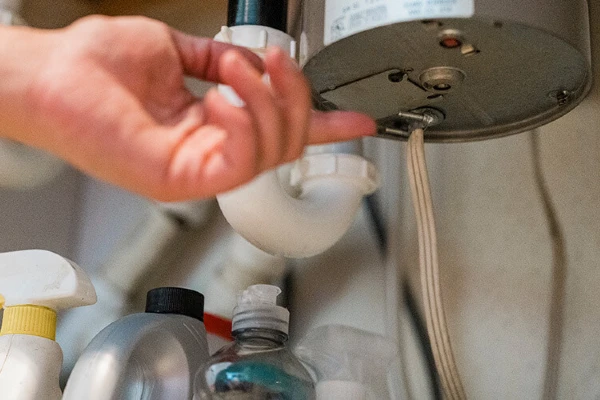Garburator Won't Spin? Here's What to Do
A garburator is a modern convenience that helps to convert food scraps into a manageable size and texture that can be easily disposed of through your plumbing system. In addition to the added convenience, a functioning garburator can help to save you time and money while reducing your impact on the environment. If your garbage disposal is in disrepair or turns on but won't spin, there are a few solutions that can help to restore the performance and efficiency of the unit. Read on to learn some helpful information and valuable tips courtesy of the appliance experts at Mr. Appliance®.

How Does a Garburator Work?
A garburator is mounted beneath your sink and is engineered to collect food waste that is placed into the drain opening above. Food is stored in the grinding chamber and when the unit is turned on, the circular, spinning impeller plate propels the food to the outer walls of the grinding chamber where it is ground into small particles and then washed away through the holes in the chamber wall.
Common Garburator Issues
Your garburator has a limited number of components that work together harmoniously, but if one or more should become stuck, clogged, or damaged, you'll need to determine the source of the issue in order to resolve it. Common garburator issues include:
Garburator Won't Turn On
If you flip the switch to your disposal and get no response, there is a disruption in power to the unit. Before calling Mr. Appliance for professional garburator repair, check the following:
- Check that the unit is plugged in.
- Press the reset button on the bottom of the device.
- If neither of these work, check the main breaker box.
- Contact Mr. Appliance for professional diagnosis and repair.
Garburator is Leaking
The most common areas for leakage to occur are at the sink flange, dishwasher connection, or discharge drainpipe. If you possess the necessary tools you can try tightening the connections at any of these points, after disconnecting the power to the unit at the breaker box.
Garburator is Draining Slowly
Clogs are the main cause of slow-moving drains and in order to access the source, you will likely need to disassemble the drain trap and discharge pipe to remove the buildup of waste.
Garburator is Humming But Won't Spin
If the garburator won't engage but you hear a humming noise when you turn the unit on, the inner flywheel is likely jammed or the motor bearing has ceased. When this occurs, the breaker may trip or the reset button may pop out but if not, it is imperative that you turn off the unit quickly to prevent further damage. Before attempting to free the flywheel using any of the methods below, turn off the power to the unit at the breaker and wall switch to prevent injury:
- Take the offset wrench that came with the disposal and place it inside the flywheel turning hole at the base of the unit.
- Turn the wrench clockwise until you feel the flywheel turn freely.
- Alternatively, insert a wooden spoon handle into the drain opening and try to dislodge the flywheel.
- You can also shine a bright light into the drain opening to see if any debris such as a bone has caused a jam, and remove the object using tongs or pliers.
- Once the issue is resolved, flip the breaker and push the reset button at the base of the disposal before turning it on.
Contact your local Mr. Appliance today for expert appliance repair near you!


